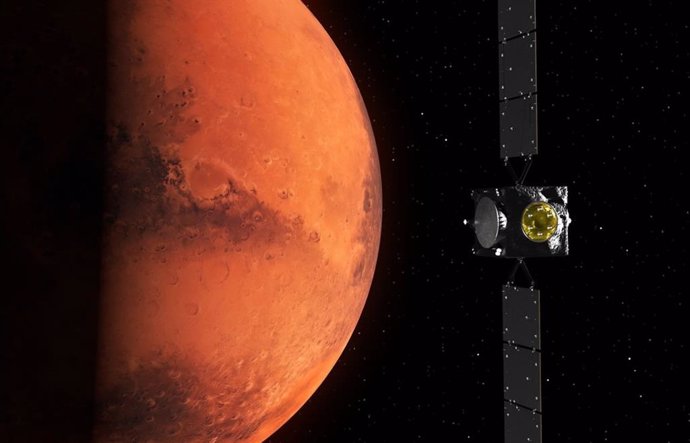Artist’s illustration of the Hera mission approaching Mars -NASA
Nov. 8 () –
ESA’s Hera mission has completed the first critical maneuver on its journey to the Didymos binary asteroid system since its launch on October 7th.
On October 23, Hera fired its three orbital control thrusters for 100 minutes, starting its first maneuver in deep space and changing its speed at approximately 146 m/s. On November 6, the spacecraft carried out a second burn lasting 13 minutes with the aim of providing an additional thrust of around 20 m/s.
Together, these power-ups have put Hera on a trajectory that will allow gravity assist on Mars in March 2025. On November 21, another much smaller correction maneuver of a few tens of cm/s is scheduled to fine-tune the trajectory for the next Mars flyby.
Hera is on a two-year trip to the Didymos binary asteroid system, where she will analyze the results of humanity’s first asteroid deflection experiment, NASA reports.
The recent deep space maneuver was carefully timed to line up Hera for a gravity assist in March 2025 that will shorten the travel time to Didymos. The gravitational pull of Mars will mean substantial fuel savings for the mission and will allow Hera to reach the asteroids months earlier than would have been possible otherwise.
Hera will also use the Mars flyby for some scientific activities. ESA teams have designed a trajectory that will see the spacecraft fly over Deimos at a distance of just 300 km before passing by Mars, offering a unique opportunity to study this small and mysterious Martian moon.
Hera will perform a second deep space maneuver in February 2026, before a series of rendezvous maneuvers between October and December 2026 bring it closer to the asteroids.
In Didymos, Hera will begin her mission to answer several questions: How and why are binary asteroid systems formed? When NASA’s DART mission impacted Didymos’ moon Dimorphos in 2022, did it leave a crater or change the shape of the entire asteroid? What is the internal structure of Dimorphos?







![[Img #74664]](https://thelatestnews.world/wp-content/uploads/2024/12/James-Watson-The-controversial-genius-behind-the-double-helix-150x150.jpg)






![[Img #74664]](https://thelatestnews.world/wp-content/uploads/2024/12/James-Watson-The-controversial-genius-behind-the-double-helix-300x200.jpg)

Add Comment